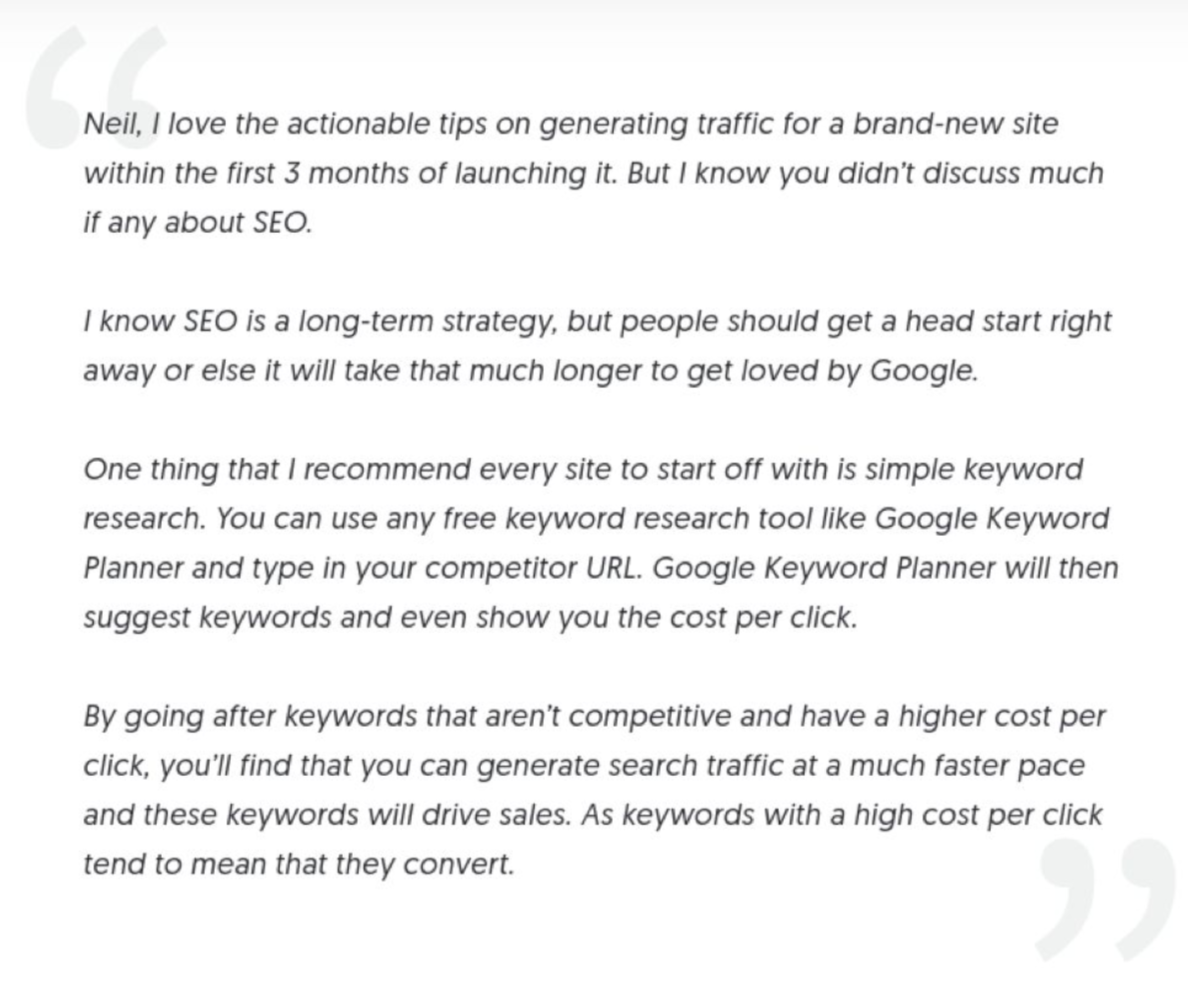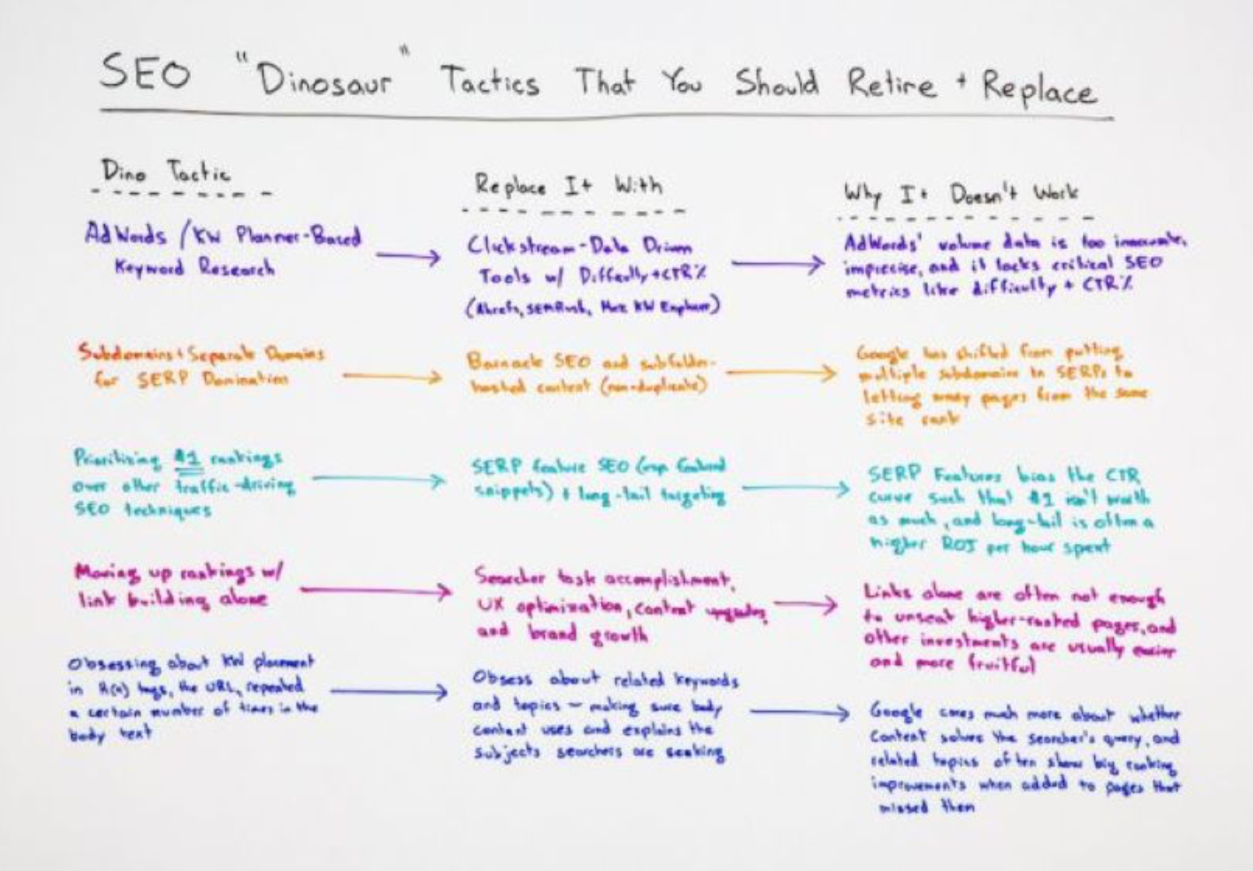The online marketing landscape is constantly evolving. This means that strategies and tactics that worked a couple of years ago can now be obsolete. So, marketers and communication professionals need to stay on top of trends. One way to do this is to read the top marketing blogs to know what’s happening in the world of online marketing.
In this blog post, we’ll go over some of the things we learned from top digital marketing blogs in 2018 and how you can apply them to your own strategy to increase your performance in 2019.
First, let’s go through some common problems that all marketers will face at some point.
- Sometimes, you’ll see your organic traffic go up and up… before your rankings slowly decline, without you knowing why.
- You want to start a new business, but every niche seems oversaturated. It’s 2019, after all, and competition is fierce.
- You’re a new business with a small budget, and you can’t figure out how to drive sufficient organic traffic to get off your feet.
- You’re spending money on influencers because you’ve heard that they are highly effective… but you’re not seeing any results.
- You’re confused as to how you can best present yourself to your readers and online visitors.
The information you’ll find in this blog post will help you solve these key issues.
6 things to learn from top digital marketing blogs for 2019
Let’s see what the top marketing blogs taught us over the course of last year.
1. The importance of user intent for SEO – Brian Dean
When optimizing a post for SEO, are you taking into account the user’s intentions?
Brian Dean from Backlinko recently shared a great lesson.
One of his top posts was steadily dropping in the SERPs. It got so bad that, at one point, his post was only getting four to six visitors a day.
Eventually, he figured out what he was missing: User intent.
Google is now putting an extra emphasis on making sure that their results match the user intent – in other words, the kind of content users searching on Google are looking to find.
You have to carefully analyze the keyword you are targeting and make sure you truly understand the intent of the people who are using that term in Google searches.
Are they looking for reviews? Information on how the product works? Information on where they can buy the product? Information on how to draw a picture of the item?
That’s one of the reasons you should be targeting long-tail keywords. User intent is a lot easier to ascertain with long-tail keywords than with broad keyword terms.
Once you have figured out the user intent (you can get some help by looking at the first page of Google and seeing what kinds of results are being shown), you have to create a post that fulfills that intent and gives users what they want.

2. Why your influencer campaigns are not bringing you any results – Jeff Bullas
Many marketers find that influencer marketing is not all that it is hyped up to be and give up on getting any satisfactory results from it.
The problem with influencer marketing today is twofold, according to Jeff Bullas.
First of all, you are facing a lot of competition as influencer marketing has caught on and became more popular. Second of all, consumers are becoming blind to promotional content on social media and paying less attention to it.
You have to take influencer marketing seriously.
This means putting more of an emphasis on hard data — researching different influencers, tracking your campaign’s performance, comparing the performance you have achieved with different influencers, and testing out different optimization methods.
In another article, Jeff stresses an additional three lessons that we have learned from influencer marketing campaigns in 2018:
- Consumers care about where their money is going and what cause it will be used for. Being charitable and donating a portion of the profits from your influencer campaigns to worthwhile causes can boost your conversion rates.
- You need to be authentic and trustworthy.
- Influencers must live a lifestyle that is aligned with your brand message.
3. You may be using outdated SEO techniques – Moz
“It’s tough to admit it, but many of us still practice outdated SEO tactics in the belief that they still have a great deal of positive influence.” – Moz
Go through the following list from Moz, and you’ll likely find that you are currently or have been guilty in the past of using some of these outdated SEO methods.
There are still plenty of old blog posts recommending them, but in 2019 and onwards, they have got to go.
There are five mistakes mentioned in the article, which Moz calls “dinosaur” SEO techniques.
- Using the Google Adwords tool for keyword research. This is a big mistake, simply because the tool is designed for PPC research, not SEO research. You won’t get SEO keyword ideas. Remember, you have to get your SEO score.
- Using subdomains or new domains in order to rank for a keyword. They are simply treated differently now by Google.
- Focusing on getting to the number one spot. There are plenty of better ways to get more clicks now, such as focusing on long-tail keywords or search snippets.
- Putting all of your efforts into link building. Instead, focus on things such as quality content and improving the user experience.
- Obsessing about keyword placement. Keywords are important, but quality content is even more important.
4. Even new sites with no money can drive traffic to their blog – Neil Patel
Ever wondered how you can start a new site and drive traffic to it if you don’t have much money to spend? Neil Patel has an awesome 12-week plan to help you jumpstart your new blog, even if you don’t have a lot to invest in ads.

Example of a helpful comment from Neil Patel.
The ideas are all outlined in this article, and they are pretty brilliant. The following are the 12 hacks you will be using throughout those 12 weeks:
- Commenting on other sites: We’re not talking about being spammy here and shamelessly leaving links to your site. Instead, we’re talking about leaving helpful comments that further educate readers and/or spark further discussion. Sometimes, site owners will let you link to your site in the comment or from your name if you’re being authentic. Even if they don’t, using your company, website, or brand name in the name field will help increase brand awareness.
- Use Twitter to drive traffic: Focus on helping people with valuable information and people will share your content.
- Get affiliates to promote your offer (focus on small affiliates): Affiliate traffic can be a main source of your leads and sales. As a new business, it can be hard to convince bigger affiliates that your product converts well, but you can offer bonuses to smaller affiliates to make it worth their while.
- Hire guest writers who have a social following and can promote the blog posts they write for your site on their channels. This way, you both win: They get their name on a published post and you get to have your site shared with all of your guest bloggers’ followers.
- Start a podcast and conduct interviews. Getting well-known names on your podcast will boost your own brand name and get more people to pay attention to you.
- Use the power of Facebook groups: Be helpful in Facebook groups by posting informative content and answering questions people are asking. You can even get marked as a “Rising Star” if you are active and helpful enough. Then, if you subtly mention your product or the fact that you offer a certain service that may help someone out, you are more likely to be listened to.
- Co-publish guides: If you can get your name published on a guide together with a more well-known author, it will boost your status.
- Use launch hacking: Use sites such as Product Hunt to promote your launch. Increase excitement and hype about your product.
- Use influencer marketing and Instagram: Get influencers to promote your products on Instagram to their followers.
- Utilize Wikipedia for your own benefit: We’re not talking about spamming Wikipedia. Instead, we’re talking about editing certain relevant articles and linking or mentioning your site when it is relevant and useful. Make sure to adhere to Wikipedia’s editing guidelines.
- Offer to speak at an online event: If you offer to speak for free at a virtual summit, you may be surprised at who accepts. Depending on how many people attend, you can significantly increase awareness.
- Offer free tools to get backlinks: For example, you can allow people to embed or link to your free SEO site analyzer tool on their site as long as they mention you as the source and provide a backlink.
5. The importance of an awesome About page – Hubspot
Take a look at these About Us page examples from Hubspot. An authentic About Us page that tells a captivating story can be used to build trust and relationships, which is a must if you want conversions.
Your About page has to be unique. It can’t tell the same story everyone else is telling.
It also has to be data-driven, aligned with your brand, and speak to your target audience.

6. How to pick a niche in a saturated market – Pat Flynn
Back in the early 2000s, picking a niche was easy. You could go into one of the top niches, such as health, fitness, dating, finance or any other popular niche.
Regardless of your choice, you could rank fairly easily, as long as you knew some basic SEO.
Nowadays, however, it can seem as if every conceivable niche is overly saturated with blogs and content.
The same goes for e-commerce stores, courses, membership sites, software products and so on, to the point where it can seem impossible to come up with something that is different.
Pat Flynn shows us that it’s not as important to create something brand new than it is to pick a small market and make it better. Instead of trying to reinvent the wheel, take the wheel and make the best version of it possible.
First, pick a sub-niche that you can specialize in. For example, instead of choosing weight loss, you can choose weight loss for postpartum women.
Then, become the go-to authority in that sub-niche.
Create in-depth content on your blog and on Youtube, build up your social following, and create an email list and send out newsletters.
You can go even further and start a Facebook group, start a forum, start a membership site, create courses, start a podcast and conduct interviews, and write an ebook.
Iteration is key
There is no end to education. Self-education and constant learning will lead to success in your entrepreneurial journey.
There is plenty more information that can be gleaned by following top marketing blogs. Stay tuned in 2019 so that you are always up-to-date on what is and what isn’t working in the online marketing industry.
What about you?
What are your thoughts on these six lessons? How can they be applied to your business and are you guilty of making any of them? Do you have any other useful blog posts from 2018 that you feel are worth a mention? Leave a comment below and let us know your thoughts!







